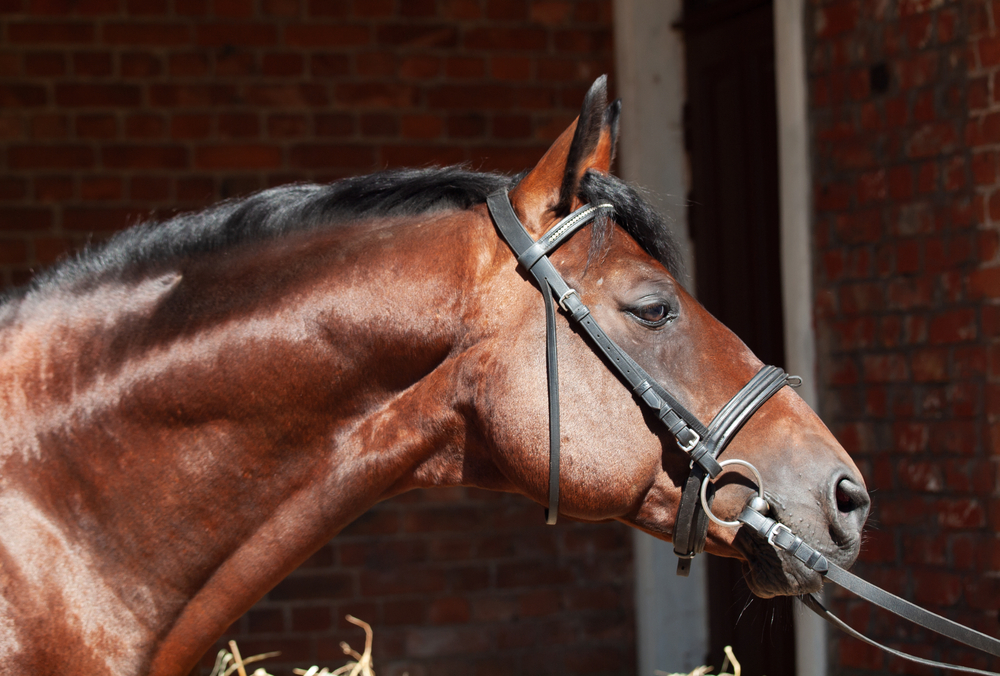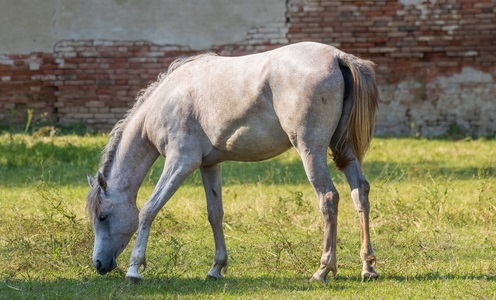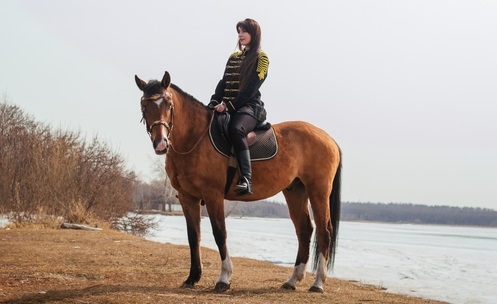From chronic dermatitis and dandruff to more serious conditions such as vitiligo and summer itch, horses have a wide range of skin conditions they’re faced with. As owners, it’s imperative to be aware of these conditions in order to provide them with the best care possible. Read on for an informative guide on equine skin conditions, including identifying, treating, and preventing horse skin problems.
Horse Skin Conditions: What Every Owner Should Know
Just like humans, horses have numerous skin conditions and epidermal diseases that require careful treatment and routine maintenance. Since your horse’s skin is his primary line of defense against microbes and germs, keeping his coat and skin strong and healthy is vital to his overall well-being and quality of life. While good grooming and proper hygiene are crucial, you may also wish to discuss ways to bolster his skincare regimen with a trusted vet, including horse supplements and other treatments to aid in his overall health.
Here are a few horse skin conditions to be aware of, as well as their causes and modes of treatment:
#1 Mange
A parasitic infection that’s caused by microscopic mites, mange is a fairly common skin condition among horses. While it is seen most often on the lower legs of draft horses with heavy feathering, it can affect any horse breed. The primary forms of equine mange in the United States include:
- Chorioptic mange: This type of mange is caused by the Chorioptes equi mite, which mainly affects the lower legs of horses with feathering.
- Demodectic mange: Caused by the Demodex equi mite, this type of mange targets the horse’s face, neck, and shoulders.
- Psoroptic mange: A rarer form of the skin condition, psoroptic mange is caused by the Psoroptes equi mite, resulting in lesions under the jaw, tail, and main, as well as in the armpits and groin.
Signs & Symptoms: At first, mange will appear as small round bumps, followed by bald spots shortly thereafter, accompanied by thickened, scaly skin (typically on the lower legs). In more acute cases, the skin may even be raw or indicate signs of secondary infections. Since it usually leads to itching of the skin, horses will bite, stamp and rub their legs seeking relief. In very rare instances, mange may appear on other areas of the body.
Modes of Treatment: Since this is a very uncomfortable skin infection, it’s important to treat horses as soon as possible to provide relief. In addition, expediting treatment can help prevent permanent scarring and thickening of the skin, which can adversely affect the mobility of the pastern joints. Consult your veterinarian for the best topical and/or oral treatments, which may include certain types of antibiotics for more severe cases.
Preventive Measures: Since mites are typically passed from one horse to another, be sure to quarantine any horses affected by mange. If horses show any signs of mange, be sure to avoid contact with others at events and shows. Since some horses may be asymptomatic (i.e., carry mites without displaying any signs of infection), it is best to quarantine any new horses and inspect them closely before they cohabitate with other horses. Also, be sure to keep stall bedding fresh and change out any bedding used by horses who were affected by mange. If there is a known outbreak, experts recommend treating all horses to ensure the mite infestation is eradicated.
#2 Ringworm
Also known as fungal dermatitis, ringworm is actually a fungal infection; no worms are involved. However, its namesake is due to the distinctive ring-like red pattern that often forms on the surface of the skin. This fungal infection of the skin is caused by one of several organisms – most commonly members of the Microsporum or Trichophyton families.
Once the fungal infection has set in, it feeds off the keratin (protein) that is found in the epidermis (skin) and hair of the animal. This infection can be tricky, since it can survive many months in an environment, on fences or tack, and may be carried upon the skin for up to three weeks before any signs of infection are apparent. During this incubation period, the fungi spreads easily and rapidly to other animals, thus creating sudden outbreaks which may affect an entire herd of horses.
Signs & Symptoms: In the case of ringworm, one will typically observe round-shaped, hairless patches on the coat, as well as skin that is crusty and scabbed in appearance. The most common areas for lesions to manifest are the shoulders, neck, and face, as well as under the girth or saddle; however, they may appear anywhere on the horse’s body. Although the affected regions may be itchy or sore, they usually cause little to no discomfort – in many instances, the horse may look completely healthy otherwise.
Modes of Treatment: If you detect the signs of ringworm, it’s imperative to isolate the affected horse from all other animals – including dogs and cats, along with other livestock. To reduce the organism’s source of food, be sure to gently clip the hair around the lesions and keep the scabs and crusting to a minimum. While keeping the affected areas clean with products such as antifungal antiseptics or shampoos may be the recommended course of action, be sure to consult a vet and your groomer before beginning any new treatment or medication. While frequent exposure to fresh air and sunlight can help to kill the fungi, be sure to call the vet’s clinic if the lesions begin to worsen. They may prescribe oral medications in conjunction with topical skin washes to resolve the infection.
Preventive Measures: Most experts will recommend quarantining any new horse in your care for the first two weeks on your farm or ranch to avoid the potential spread of contagious diseases, including ringworm. One of the best methods of prevention is practicing good hygiene – be sure to keep separate grooming supplies, tack, and equipment for each horse, and never share with others at any events or shows. In the event of an outbreak, it’s essential to clean and disinfect all equipment, stalls, and fences in communal areas/stalls. A power washer is a great tool to distribute disinfectant into hard-to-reach areas. Since people can get ringworm, as well as household pets (including dogs and cats), proceed with extra precautions before and after handling infected horses or livestock, which includes but is not limited to wearing gloves and sterilizing all gear and equipment.
#3 Rain rot
Also referred to as ‘rain scald’ or dermatophilosis, rain rot in horses is a skin condition that can be easily prevented by providing your horse with adequate protection from the elements – namely, the rain. When a horse’s coat does not have the opportunity to dry out adequately, it often leads to this painful bacterial condition. Initially, the culprit – Dermatophilus congolensis – can live on the skin without wreaking too much havoc. However, this troublesome organism eventually multiplies in moist environments, such as a horse’s damp coat. Once the bacteria locates a break or puncture in the skin – even something as small as a scratch or an insect bite – an infection can manifest. Furthermore, if the horse’s immune system is compromised in any way, such as preexisting health conditions, old age, or malnutrition, it can make him even more susceptible to skin infections. Heavy winter coats in horses can also be a breeding ground for rain rot, since it traps moisture against the skin.
Signs & Symptoms: Rain rot in horses first presents itself as crusty scabs that eventually form raised bumps on the skin, accompanied by tufts of upright matted hair along the coat. Forming on regions of the body that are continuously damp, the crusted areas eventually peel off, leaving bald spots on the horse’s coat. In extreme cases, pus may be noted beneath recently-shed scabs.
Modes of Treatment: Besides being the humane thing to do, treating rain rot as swiftly as possible is important to avoid permanent hair loss and scarring. Therefore, protecting the affected horse from wet weather conditions is first and foremost in the healing process – be sure to place him in living quarters where his coat can thoroughly dry out. Next, there are a number of disinfecting rinses and antimicrobial horse shampoos available to treat rain rot; however, it’s best to consult your groomer and veterinarian to determine the appropriate course of therapy. Depending on the severity of his condition, your vet may prescribe topical and/or oral medications.
Preventive Measures: First and foremost, this infection can easily be avoided by making sure horses have appropriate shelter from damp weather conditions. Besides maintaining the stable area’s roof and repairing any leaks, waterproof blankets and lightweight sheets can also assist in keeping pastured horses clean and dry – just be certain that their coats aren’t damp when covering them up. Another good hygiene tip: always keep horses properly groomed, not only to keep them free from debris and dirt (which can trap moisture against their delicate skin,) but so you can easily spot signs of infection. Finally, disinfect any equipment, blankets, or other gear that comes in contact with an infected horse before using it again.
#4 Warts
Also known as papillomas, warts in horses are caused by the equine papillomavirus (EPV), an organism that can survive for weeks on skin and surfaces for weeks. Although warts can make an appearance in adults, younger horses (particularly 3 years of age and under) are most susceptible to this skin condition.
Signs & Symptoms: Usually no larger than the size of a pea, warts are small, cauliflower-like growths of the skin that are either pink or gray and raised in appearance. Appearing either singularly or in cluster formations, they commonly form on the muzzle or around the eyes, but may also be seen around the ears, lower legs, and genital regions. While relatively harmless, warts do not usually cause the animal any known discomfort or pain. However, if it is noted that it is impeding any bodily functions – such as blinking, eating, or interfering with his tack – owners may wish to consider surgical removal at a vet’s discretion.
Modes of Treatment: Typically, warts on younger horses will go away on their own without leaving scars. However, they’re more prone to sticking around when they show up on older horses. If they require removal, it may be done with cryosurgery or laser; such procedures can potentially result in scarring. Your vet may recommend medications to bolster your horse’s immunity against EPV.
Preventive Measures: Maintaining routine vet visits and inspecting your horse’s coat and skin on a regular basis can be one of the most effective forms of prevention. Be sure to have a trusted vet inspect persistent warts and other skin conditions on a regular basis, since some relatively harmless skin conditions can mimic more dangerous ones, such as sarcoids. In the event your horse is diagnosed with a chronic case of warts, experts recommend isolating the affected animal from others in the herd, especially younger horses. Disinfecting any shared gear is also key to hygiene safety.
#5 Lice
Another parasitic infection like mange and sweet itch in horses, lice (also known as pediculosis) is an uncomfortable infestation that must be treated right away. In addition to irritating your horse’s skin, it also puts him at risk for anemia in severe cases. There are two primary types of lice – chewing lice (Damalinia equi) feed on dead skin cells, and typically affect the horse’s flanks, neck and base of the tail. On the other hand, sucking or biting lice (Haematopinus asini) feed on the animal’s blood. This lice species favors long hair, thus frequenting the mane and forelock, as well as the pasterns and tails of long-feathered horse breeds.
Signs & Symptoms: In the case of lice, one of the first things owners will note is visible hair loss, primarily on the neck and shoulders, followed by the head, base of the mane, and the tail area. Intense itching and rubbing might also lead to scabbing, lesions, and in severe cases, secondary skin infections. If you suspect lice, carefully examine the hair and skin for insects and eggs; horses affected by this infection will usually display signs of diminished health. Although infestations can occur at any time of year, they are most prevalent during the winter months.
Modes of Treatment: While there are numerous products to treat lice, including insecticidal shampoos, washes, powders, and sprays, be sure to consult with your vet to determine the best course of treatment. In extreme cases, the vet’s office may prescribe oral medications to fully eradicate the infestation.
Preventive Measures: One of the most effective modes of prevention is complete and frequent sterilization of all tack, gear, and equipment – never share between horses. In the event that an infestation occurs, isolate any affected horses, since it is easily passed from horse to horse. Throughout the infestation, be sure to keep everything as clean and sterile as possible, (including blankets, paddock fences, stalls, and bedding) in order to end the lice life cycle and prevent a re-infestation.
As you can see, horses are prone to a wide array of health issues, skin conditions, and complications. Therefore, it’s important to stay educated and proactive in his care, including proper grooming and hygiene techniques, providing him with adequate shelter at all times, knowing when to consult with the vet and/or groomer, and routinely checking him for any abnormalities of the skin and coat. By following these general guidelines, you can help ensure your horse lives a long, happy, and healthy lifespan.
Sources Cited:
1) McVicker, Dee. “How to identify 8 common equine skin diseases.” EQUUS (equismagazine.com), October 6, 2020, https://equusmagazine.com/horse-care/common-equine-skin-diseases. Accessed June 6, 2021.
2) Barakat, Christine. “New viral source of equine warts discovered.” EQUUS (equismagazine.com), December 13, 2020, https://equusmagazine.com/diseases/new-equine-wart-virus. Accessed June 6, 2021.
3) Blocksdorf, Katherine. “How to Identify Horse Skin Diseases and Conditions.” The Spruce Pets (thesprucepets.com), January 28, 2020, https://www.thesprucepets.com/horse-skin-problems-1886458. Accessed June 6, 2021.






